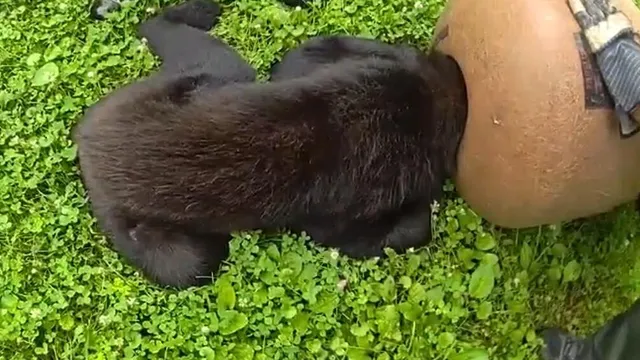
Pennsylvania Game Commission saves trapped bear from container
2025-07-05 19:15- A young black bear became trapped in a fiberglass container in Larksville Borough, Pennsylvania.
- The Pennsylvania Game Commission and local police quickly mobilized to rescue the bear.
- The successful rescue highlights the importance of wildlife management and safety for residents.
Express your sentiment!
Insights
In Pennsylvania, a young black bear found itself in a precarious situation when it became stuck in a fiberglass container in Larksville Borough, Luzerne County. The incident occurred on a Wednesday, prompting a concerned resident to contact the Pennsylvania Game Commission for assistance. The response time was swift; state game wardens, supported by the Larksville Police Department, quickly assessed the situation and formulated a plan to rescue the bear. Utilized immobilization techniques allowed the crew to remove the container without harm to the animal. The rescued bear weighed just over 80 pounds and showed no signs of injury. Once safely extracted, the bear was transported to state game lands in the region for release, where it could safely return to its natural habitat. The Pennsylvania Game Commission's proactive measures ensured the bear was unharmed and able to live freely in the woods once more. In a separate incident on the following Saturday, the Pennsylvania Game Commission, in collaboration with the Warminster Police Department, captured another black bear that had wandered into a resident's backyard. This occurrence prompted the Warminster police to issue a community announcement, urging residents to report any sightings of the bear. The police advised their community to stay alert and to call 911 if they encountered the wildlife near homes, ensuring community safety. By 10:30 a.m. on that Saturday, officers successfully apprehended the bear in a residential area on Olive Street with the Game Commission's assistance. After its capture, the bear was prepared for relocation to a safer habitat, thereby avoiding any potential harm to residents and giving the bear a more suitable environment to thrive. These events highlight the critical role local authorities play in managing wildlife and ensuring both animal welfare and human safety.
Contexts
Black bears are increasingly found in urban areas, a phenomenon that poses various challenges for wildlife management and urban residents alike. As urbanization expands into natural habitats, bears are more frequently drawn to human environments in search of food, leading to interactions that can be dangerous for both bears and people. Understanding the behavior of black bears in these settings is crucial for developing effective strategies to minimize conflicts and promote coexistence. Black bears are opportunistic feeders and can easily adapt to an urban landscape where food sources such as garbage, bird feeders, and pet food are readily available. Consequently, their foraging habits often bring them into closer proximity to humans, increasing the potential for encounters that can escalate into aggressive behavior if bears feel threatened or are conditioned to associate humans with food. In urban contexts, the behavior of black bears is influenced by several factors including availability of food, human activity patterns, and the demographic characteristics of the bear population itself. Research indicates that bears that have access to human food sources can suffer from poor nutrition and health issues, as these items are not part of their natural diet. Bears may lose their natural foraging instincts and become reliant on human-provided food, which can lead to persistent behaviors such as raiding garbage cans or entering homes, resulting in the need for wildlife management intervention. Mitigating these human-wildlife interactions requires public education on safe practices, such as securing trash, removing bird feeders during peak bear activity periods, and keeping pets indoors, especially during dawn and dusk when bears are most active. Urban areas also provide unique risks for black bears. The presence of vehicles, human populations, and urban infrastructure can lead to increased mortality rates among bears due to vehicle collisions and human-induced hazards. Additionally, as bears become more accustomed to urban settings, they may lose their fear of humans, which can lead to more aggressive behaviors. This 'habituation' can escalate the risk of dangerous encounters, not only affecting human safety but also leading to calls for the removal or euthanization of bears that behave aggressively. Effective management strategies must therefore focus on preventing bears from becoming habituated to urban environments and ensuring that residents understand the importance of keeping their activities and properties bear-proof. To foster a harmonious coexistence between humans and black bears, communities must integrate wildlife management with urban planning and community outreach. Collaborative efforts involving wildlife biologists, local governments, and residents can help create guidelines and policies that protect both bears and people. Furthermore, research and monitoring of bear populations and their movements within urban landscapes can provide valuable insights, informing adaptive management practices that respond to the dynamic interactions between black bears and urban environments. By prioritizing safety and education, urban communities can effectively reduce conflicts, ensuring that black bears remain an integral part of their natural ecosystems, while minimizing risks to human populations.